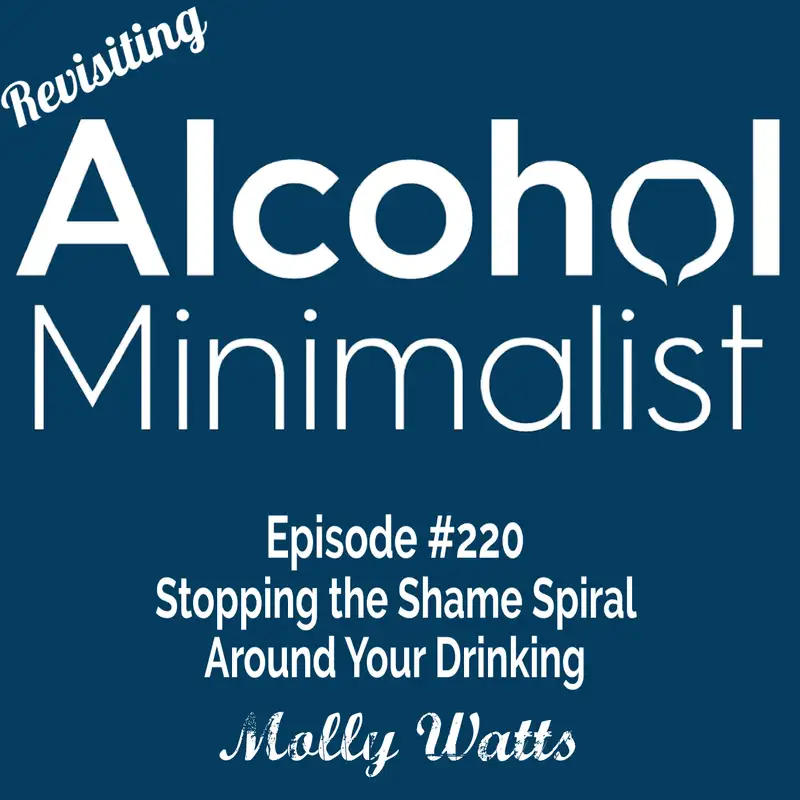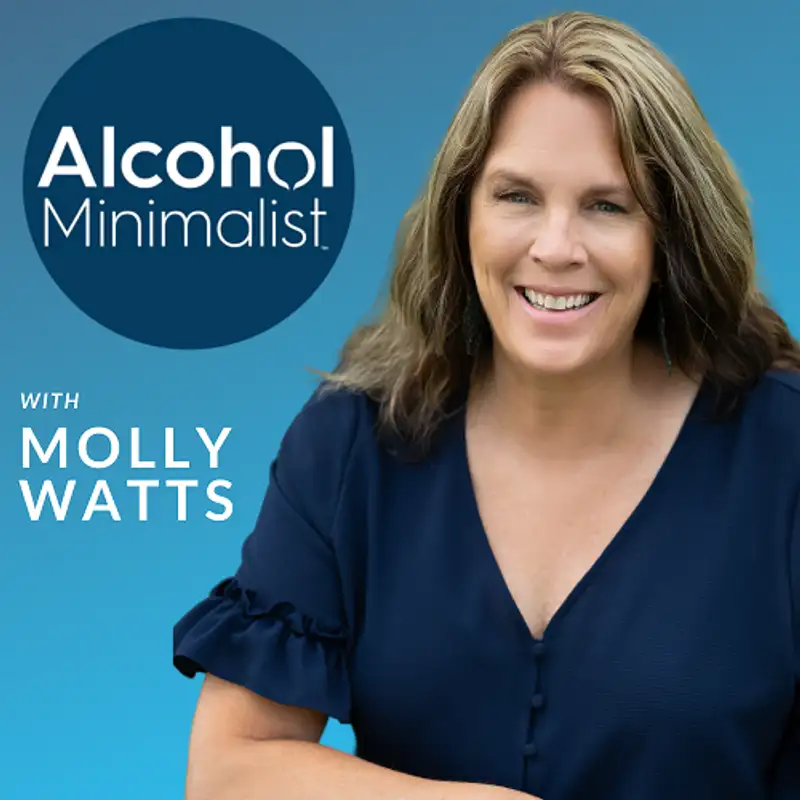Revisiting: Stopping the Shame Spiral Around Your Drinking
In this episode, Molly revisits one of the most important conversations around changing your relationship with alcohol—how shame can keep you stuck, and how to break free from the shame spiral.
This episode is a spring break replay, and for good reason—it’s one of Molly’s favorites and a foundational message for anyone working to become an alcohol minimalist.
In this episode, you’ll learn:
- What shame really is and how it’s different from guilt
- Why shame is especially destructive for daily habit drinkers
- The role shame played in Molly’s personal journey with alcohol
- How shame often masks itself as “powerlessness” and leads to hiding, isolation, and more drinking
- Why understanding your thoughts is the key to disrupting shame
- Three science-informed strategies to stop the shame spiral:
- Name it – acknowledging shame takes away its power
- Self-compassion – treating yourself like you’d treat a friend
- Separate your thoughts from your identity – you are not your drinking behavior
You’ll also hear:
- A powerful quote from Brené Brown on the unspeakable nature of shame
- How common narratives (like the AA concept of “powerlessness”) may unintentionally reinforce shame
- Why living in the gains rather than the gap is essential for motivation and long-term change
Takeaway Message:
Shame doesn’t help you change. In fact, it keeps you stuck. The pathway to lasting transformation starts with understanding your thoughts, practicing self-compassion, and learning how to disrupt the automatic cycles that have been running your drinking habit.
Shame doesn’t help you change. In fact, it keeps you stuck. The pathway to lasting transformation starts with understanding your thoughts, practicing self-compassion, and learning how to disrupt the automatic cycles that have been running your drinking habit.
Resources Mentioned:
- Brené Brown’s definition of shame
- Previous episodes on “The Gap and The Gain” (Think Thursday episodes)
- Tools for becoming a better thinker and understanding your brain
Want more support?
Check out our programs at www.mollywatts.com or join our free Facebook group Alcohol Minimalists: Change Your Drinking Habits. You’re not alone—and you are absolutely capable of creating peace with alcohol.
Low risk drinking guidelines from the NIAAA:
Check out our programs at www.mollywatts.com or join our free Facebook group Alcohol Minimalists: Change Your Drinking Habits. You’re not alone—and you are absolutely capable of creating peace with alcohol.
Low risk drinking guidelines from the NIAAA:
Healthy men under 65:
No more than 4 drinks in one day and no more than 14 drinks per week.
Healthy women (all ages) and healthy men 65 and older:
No more than 3 drinks in one day and no more than 7 drinks per week.
No more than 3 drinks in one day and no more than 7 drinks per week.
One drink is defined as 12 ounces of beer, 5 ounces of wine, or 1.5 ounces of 80-proof liquor. So remember that a mixed drink or full glass of wine are probably more than one drink.
Abstinence from alcohol
Abstinence from alcohol is the best choice for people who take medication(s) that interact with alcohol, have health conditions that could be exacerbated by alcohol (e.g. liver disease), are pregnant or may become pregnant or have had a problem with alcohol or another substance in the past.
Abstinence from alcohol is the best choice for people who take medication(s) that interact with alcohol, have health conditions that could be exacerbated by alcohol (e.g. liver disease), are pregnant or may become pregnant or have had a problem with alcohol or another substance in the past.
Benefits of “low-risk” drinking
Following these guidelines reduces the risk of health problems such as cancer, liver disease, reduced immunity, ulcers, sleep problems, complications of existing conditions, and more. It also reduces the risk of depression, social problems, and difficulties at school or work.
Following these guidelines reduces the risk of health problems such as cancer, liver disease, reduced immunity, ulcers, sleep problems, complications of existing conditions, and more. It also reduces the risk of depression, social problems, and difficulties at school or work.

